Articles and Features
Artist Interview: Jong Oh
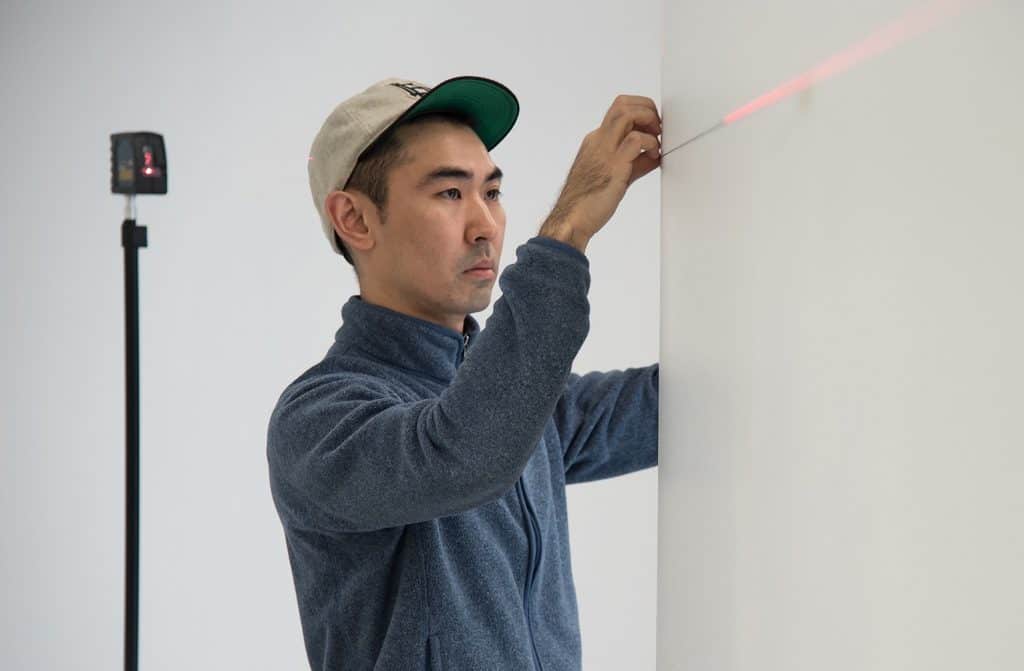
“There is a rhythm in this improvisation and I just let the conversation flow naturally between the space and myself. The final work is the result of the conversation and I never know how it will end.”
Practicing a restrained and poetic minimalism that sees him work nomadically from space to space, Jong Oh has developed a masterful practice exploring ways of describing space. In stark contrast to Judd’s famous ‘Specific Object’ diktat, Jong has instead mastered the unspecific—an ethereal and meticulously crafted combination of line and space, mutable according to the fluctuations of light, shadow and viewing perspective. Photographic reproductions struggle to depict or do justice to the complex spatiality of the works. They oscillate between the visible and invisible, so reductive are they in their materiality. On the occasion of his current exhibition at Sabrina Amrani in Madrid, we interviewed Jong to learn more about his unique take on making work.
Hello Jong, thank you for making the time to talk to us about your exhibition and working methods. How do you approach looking at a space and determining what to make for it? What are the things you look for; particular universal qualities or more quirky elements of a given space to work with or highlight?
I approach the space with an open and flexible mindset. It’s important for me to maintain the balance between the space and what I create because I consider the space as part of the entire process and also of the finished work. Since I can’t just create whatever I want, I carefully try to hear what space suggests and allows me to do. Anything in a space can speak to me. A nuance of the architecture, artificial light, changing natural light, shadows, doors, windows, stains and cracks on the wall can be elements to respond to. It’s a very intuitive process.
You don’t have a permanent studio. Do you enjoy the freshness of new spaces as a key element of your working practice to inspire new works?
Adapting to a new space is always exciting. I’m used to adaptation, since I haven’t had a permanent studio for over eight years. I consider the space wherever I create my work as my temporary studio: museums, galleries, homes, residencies etc. You can’t expect anything before getting to the actual space because space is something that you must experience in person. The surprise and originality that a new space brings is what I enjoy.
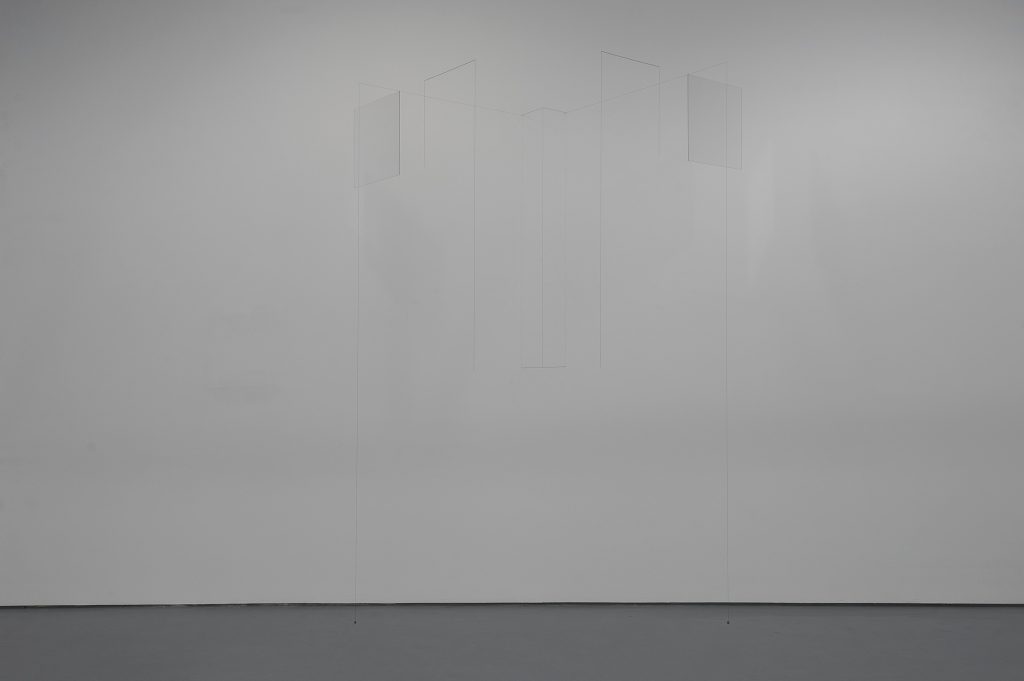
When you prepare for an exhibition you have said that the process involves ‘listening’ to a space. What kind of quality or energy are you looking to identify beyond the physical characteristics?
I believe that the space shapes my mind before I shape my works. Just as the space we live in is a big part of our identity, the work must have an influence from the space where it is created. Many people relate me to a spider. I think the difference is, while the spider creates his work depending on the physical structure, I create my work based on the air or mood that the physical characteristics gives out. This energy that the space gives out is what shapes the works and that’s what I’m listening for.
And how does this then translate to your working process when you set about making site-specific work?
After spending some time listening to the space I draw the first single line in the air. If it’s not a successful line, I will take it back. If the first line passes through, it will continue to the second one. The process is a repetition of this careful listening and finding the right line at the moment. There is a rhythm in this improvisation and I just let the conversation flow naturally between the space and myself. The final work is the result of the conversation and I never know how it will end.
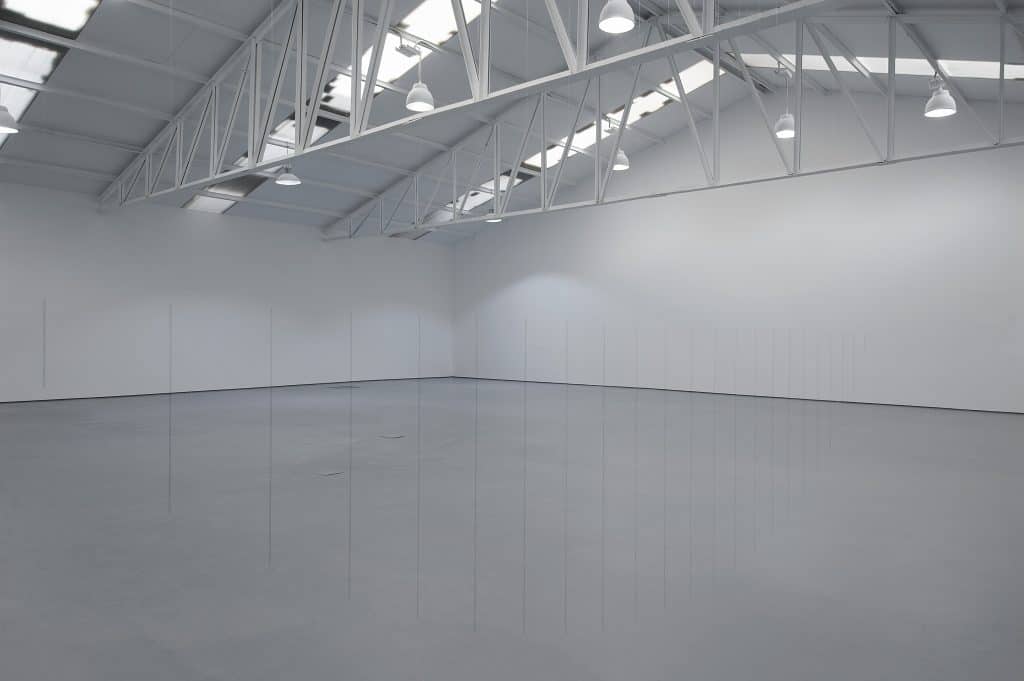
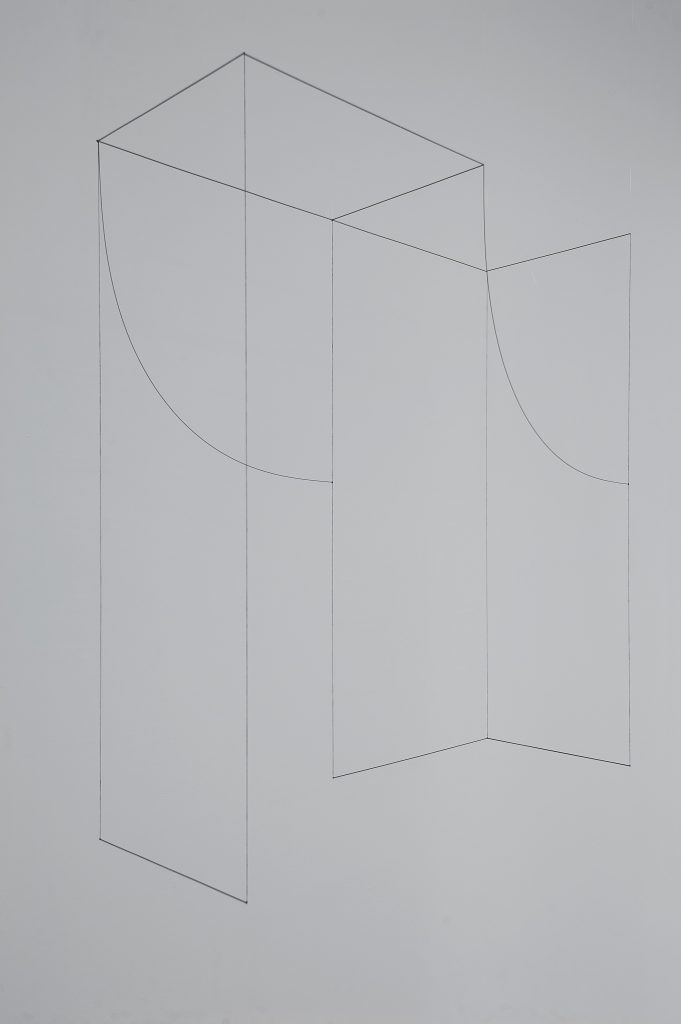
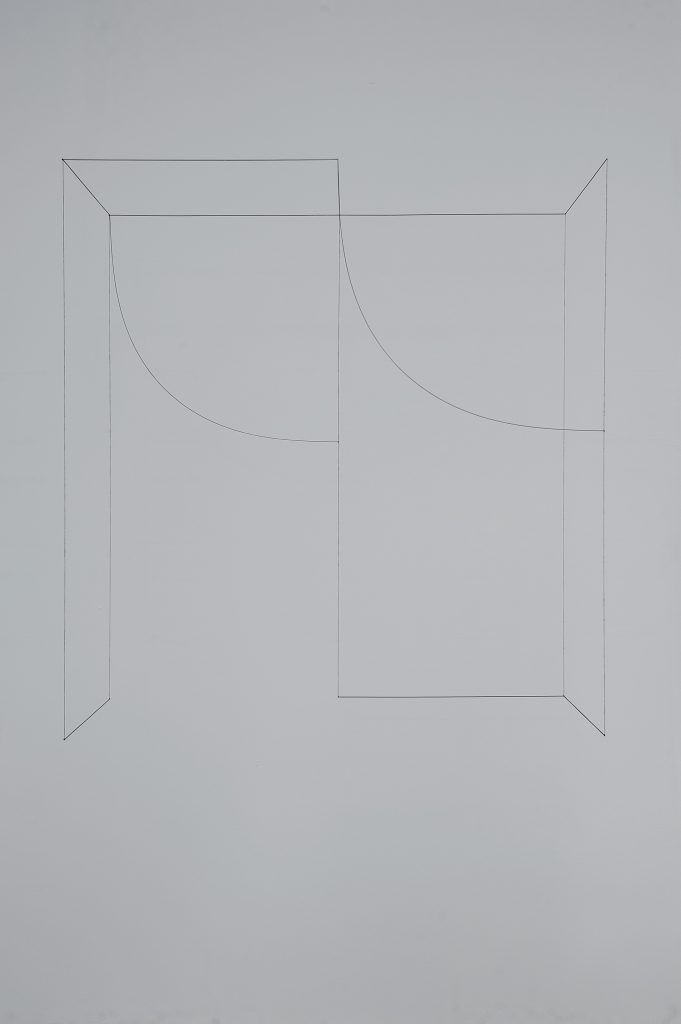
Do you consider your work to be analogous to architecture in some way?
I think that there are some overlapping elements between my work and architecture.
For example, we both form boundaries to define space. Before we define any space there is only emptiness full of possibilities. As soon as we create a line in emptiness, a sense of direction and inner-outer space is realized around that line. Although we use physical materials to create these boundary lines, in the end, these are subsidiaries to support the main material: space.
Also, we both work closely with our surroundings. The scenery, sunlight, soil, wind, sound, gravity, temperature, neighbors etc. are all elements that architecture has to consider. It’s impossible to separate our works from its circumstances.
Do you make all the works for a show in the gallery itself?
Most of my works are site-responsive so a big percentage of the works in the exhibition are created in the gallery itself.
Some of the works on paper (Watercolor Drawings) or small drawings on wooden panels (Folding Drawings) are made from other places.
“Although my process is intuitive and the works look illusional, in reality, there’s a lot of small engineering going on.”
You have a limited palette of materials— chains, string, metal rods, wooden sticks, graphite lines. When you select materials what properties are most important to you, the formal qualities of the materials themselves or the manner they serve the installation in a technical way?
My materials are limited because I only use thin linear materials in order to occupy as little space as possible.
The technical part is more important when selecting specific materials. Although my process is intuitive and the works look illusional, in reality, there’s a lot of small engineering going on. All the materials are doing physical work by pushing, pulling or hanging onto each other to maintain the tension and balance in the installation. Despite all the lines looking similar to each other, I use a variety of thicknesses of strings, chains, metal rods, and pencils and the scale varies within a tenth of a millimeter. Even the weight of a thin cotton thread matters.
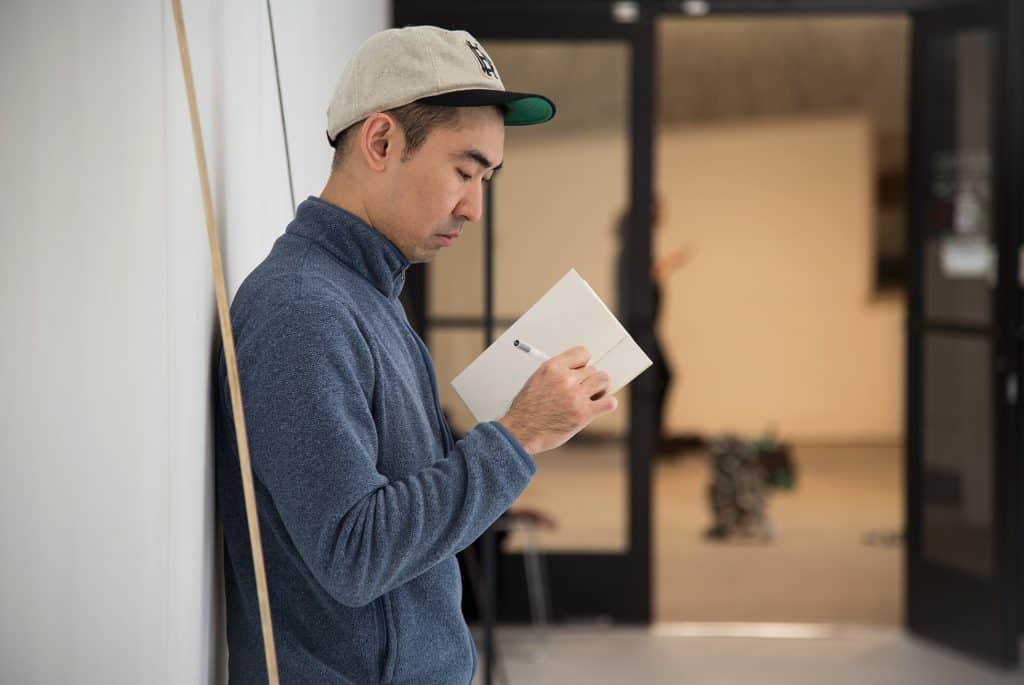
Your works could be described as three dimensional drawings mapping out a space, where the physical, the absent and various kinds of illusion all play a part. Would you describe the experience you seek to engender in the viewer a phenomenological one or a more purely object based one?
I think my work gives both experiences. It depends on the distance to the work and the time spent in the space approaching it. From a distance, you can only see the form of the lines—this is a spatial experience which comes before thinking rationally. For some time you are wondering and sensing the space with your body until you get closer and start to see the materials, and even then still wondering about the uncertainty of materials and structure. I think this is the transition when the phenomenological becomes an object based one. Anyhow, I will never know the exact experience which the viewers have. If we compare the experience to reading a story, I feel like I’m writing the story backwards. I create the work starting from one single point, whereas the viewers experience the work as a whole first.
The experience of the work changes in various ways. As the viewer moves around a piece the connected elements and planes change in their interrelationships according to perspective and line of sight, and also as the light changes in a space over the course of a day various shadows influence the composition in both a very literal way and also in the perception of it. Can you describe how you intend this nuance or understand these elements a little for us?
I find the nonpossessive and apprehensive nature of impermanence very beautiful. That’s because I believe that impermanence is the reality of our life and our precarious position gives value to our temporary possession and equilibrium. I think these thoughts are naturally translated into my work which constantly changes depending on the perspective and the change of light. Also, every audience gets a difference experience as they have different heights and different retinas for sensing the light. Some people find my work meditative while others find it intimidating. This ambiguity is what interests me.
Are there any artists or works who you especially admire or have been particularly inspired by? You often use the term ‘minimalism’ to describe your work and the manner in which you live. Do you identify with a particular artistic lineage or are you using the word more literally as a personal philosophy?
Rebecca Horn’s performance piece called ’Scratching Both Walls At Once’ 1974-75, Richard Tuttle’s ‘Wire Piece’ and ‘Rope Piece’ series and Architect Louis Kahn’s architecture and life were big inspirations when I was an art student.
I use the term ‘minimalism’ more as a personal philosophy. My minimalism is connected to nomadism which again connects to the nonpossessive and apprehensive nature of life. My nomadic life has made me live a life based on the notion of detachment. This has influenced my work to be temporary and site-responsive which has made my nomadic life even more extreme. For me, minimalism is not a concept that I aimed for. Instead it’s just the way of my existence.
Related reading to learn more
Jong Oh – Website
Jong Oh – Profile on Artland
Sabrina Amrani – Jong Oh
Studio Visit: Guglielmo Castelli